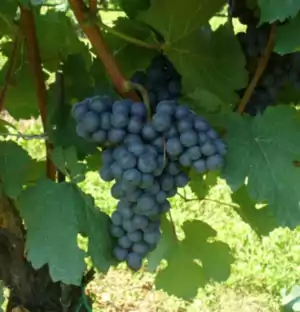 DELIVERY FROM £4.95
DELIVERY FROM £4.95 FREE DELIVERY FOR ORDERS OVER £100
FREE DELIVERY FOR ORDERS OVER £100Home » Community » Wine and Grape Guide » Pignolo

Pignolo is an ancient red grape variety native to Friuli, northeastern Italy, with historical roots dating back to the Middle Ages. As early as the 14th century, records mention a wine called “Pignolo” being produced in the countryside near Udine. The name Pignolo comes from “pigna,” the Italian word for pine cone, referring to the compact shape of the grape cluster. This name has caused confusion over the years, as there are other grape varieties - such as Pignola Valtellinese - with similar names but little genetic or enological connection to Friulian Pignolo.
True Pignolo is exclusively Friulian and was once grown primarily around the Abbazia di Rosazzo, a historic Benedictine abbey. The variety nearly disappeared but was saved from extinction in the late 20th century thanks to the dedication of forward-thinking winegrowers in the Rosazzo, Buttrio, and Premariacco areas. Today, Pignolo is recognized as a prestigious native grape of Friuli, prized for its quality and impressive aging potential.
The grape features small, round, black berries with thick, waxy skins. The clusters are tight, small, and cylindrical, and the vine’s leaves are typically three- to five-lobed and small in size. Though Pignolo has low yields, its production is regular and consistent, making it ideal for premium winemaking.
Wines made from Pignolo are light to deep ruby red, known for their refined structure and elegant character. They offer aromas of cherry, red berries, and subtle earthy notes, with a firm tannic backbone and good acidity, traits that make them highly suitable for aging. With time, Pignolo wines develop complexity and finesse, standing proudly among Friuli’s most noble reds.



Before we say ciao, why not join our newsletter & stay up to date on everything happening on planet Italyabroad.com